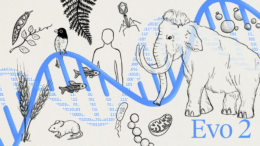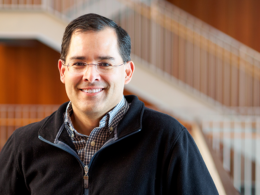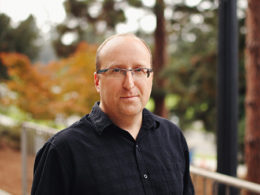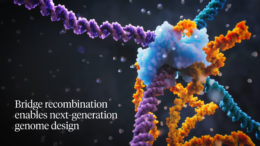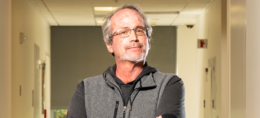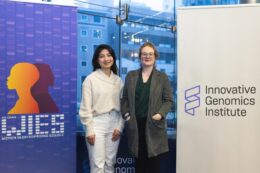Posts Tagged ‘faculty’
AI can now model and design the genetic code for all domains of life with Evo 2
Research led by Professor Patrick Hsu has produced Evo 2, the largest AI model in biology to date, which can accurately predict the effects of all types of genetic mutations.
Read MoreDavid Schaffer Elected to NAE
Congratulations to David Schaffer, Professor of Chemical & Biomolecular Engineering, Bioengineering and Molecular & Cell Biology, on his election to the National Academy of Engineering!
Read MoreYartsev wins Richard Lounsbery Award
Michael Yartsev will receive the 2025 Richard Lounsbery Award from the National Academy of Sciences to recognize his extraordinary scientific achievement in understanding the neural basis of natural behaviors.
Read MoreBridge RNAs: ‘Holy Grail’ in Next-Gen Gene Editing Tech?
Patrick Hsu’s breakthrough discovery of bridge RNA gene editing tools is discussed on WebMD, with contributions from BioE alumnus Connor Tou.
Read MoreArkin Lab receives ARPA-H award for microbiome engineering
Adam Arkin has been granted an award of over $20 million from the Advanced Research Projects Agency for Health (ARPA-H) to pursue microbiome engineering to create probiotic bacterial communities that prevent and treat lung pathogens.
Read MoreHealy Lab startup receives LSEC Venture Grant
MuscleMatrix and their hydrogel scaffold for muscle loss injuries is part of LSEC’s 2nd cohort of Venture Grant startups.
Read MoreFaculty Focus on Leah Guthrie
Professor Leah Guthrie works to understand how the microbiome metabolites and proteins communicate with our human cells to influence our physiology and pathophysiology. Learn more about Guthrie in this interview with QB3.
Read MoreDelcassian receives seed funding for cancer research
Professor Derfogail Delcassian has been awarded $1 million in non-dilutive seed funding to accelerate the commercialization of her work on targeted molecular therapies for hard-to-treat cancers.
Read MoreAcid-degradable lipid nanoparticles enhance the delivery of mRNA
Research by Niren Murthy’s lab presents a new acid-degradable linker that rapidly hydrolyzes in endosomes but is stable in the blood, which could significantly increase the efficiency of delivering mRNA-based therapies to cells.
Read More

